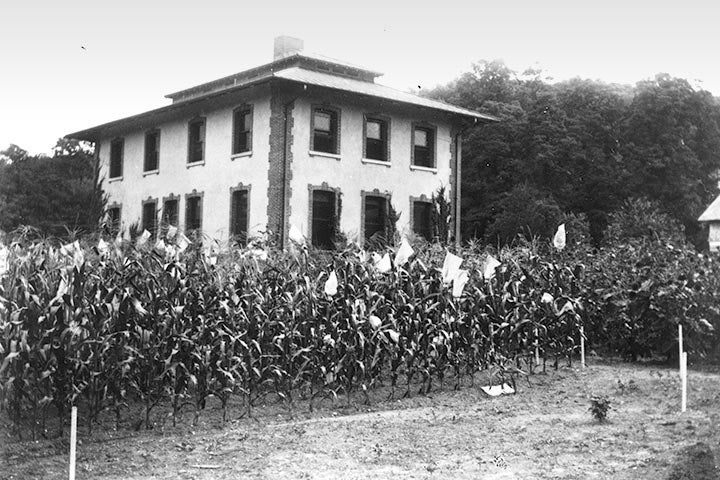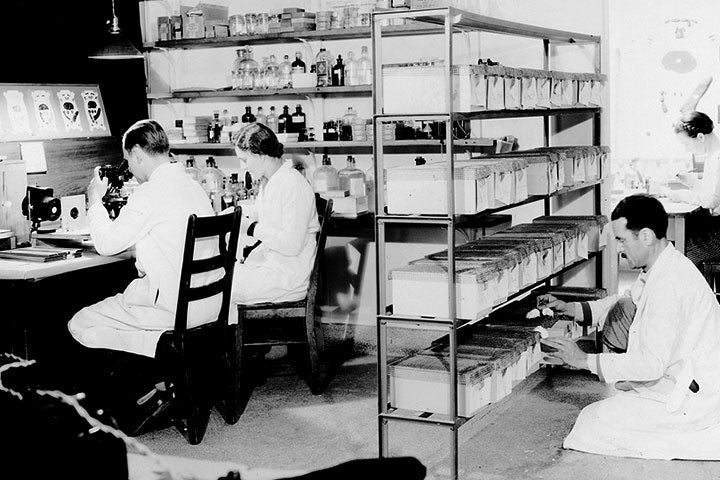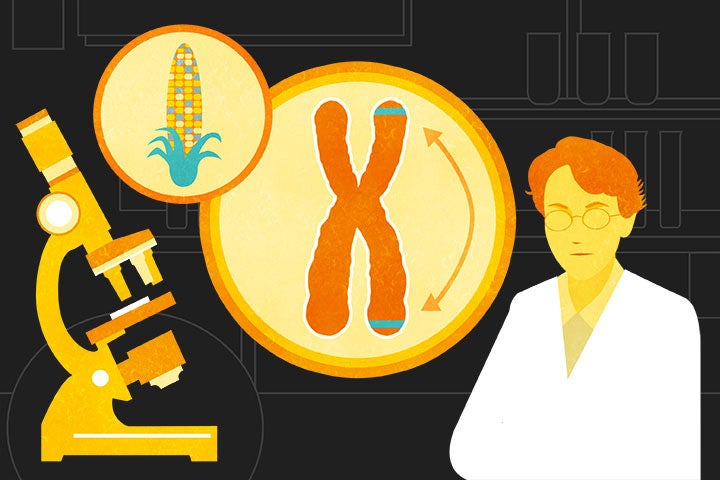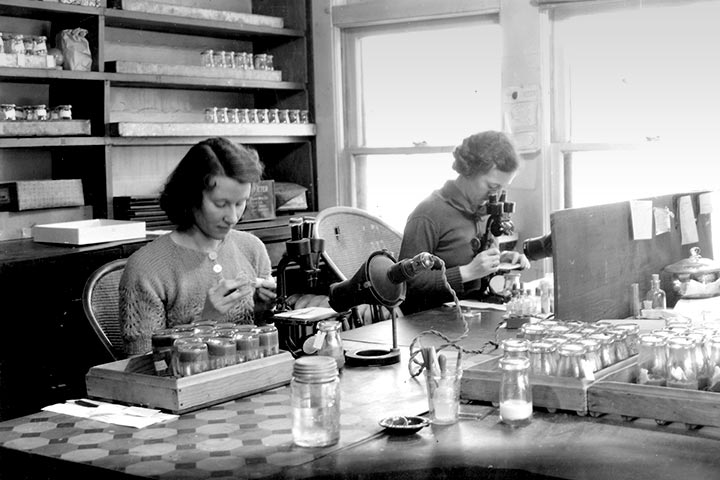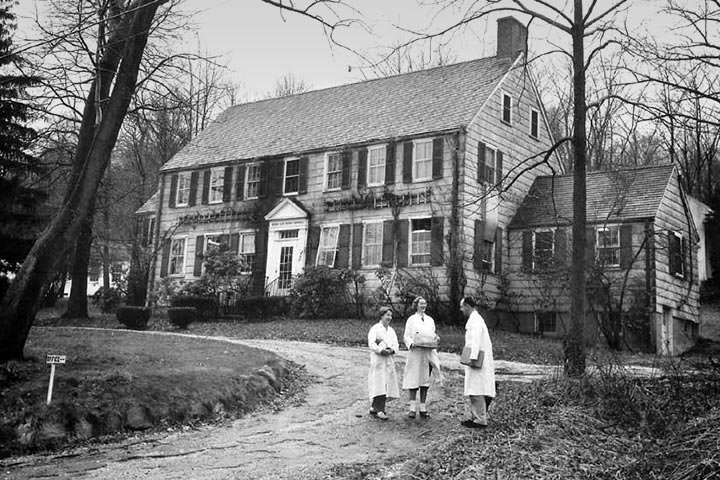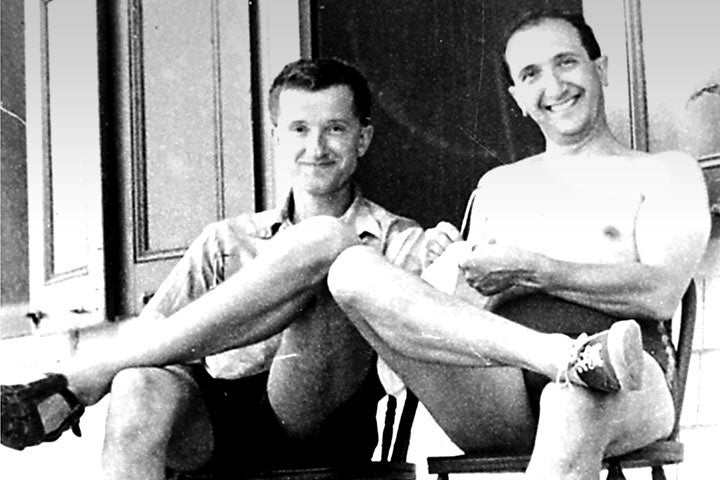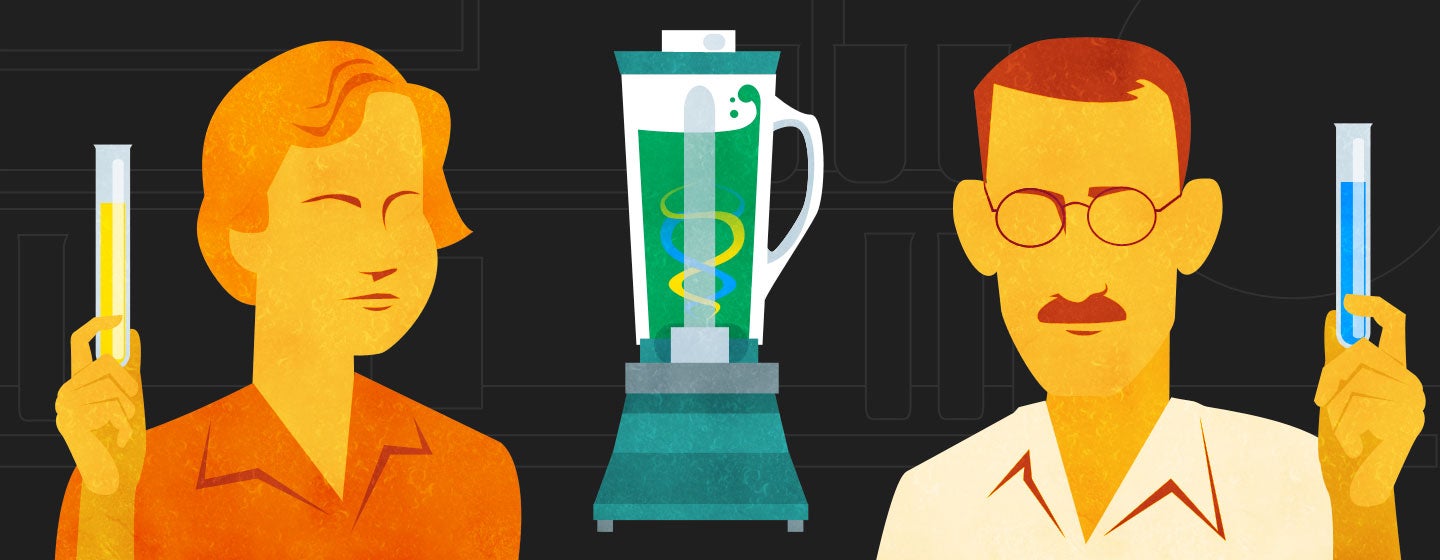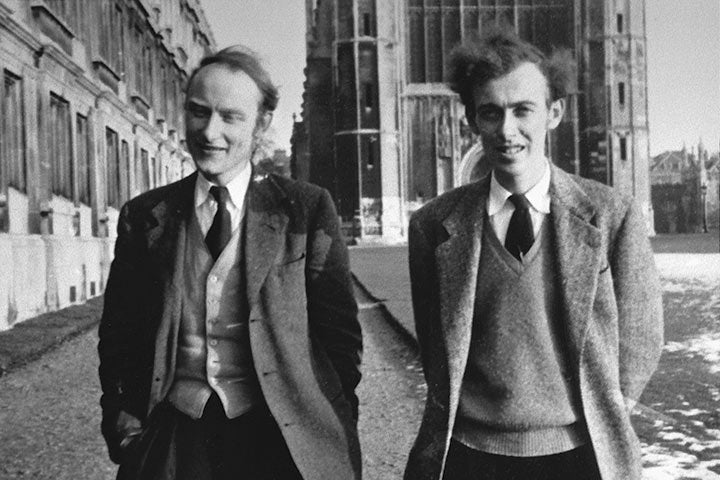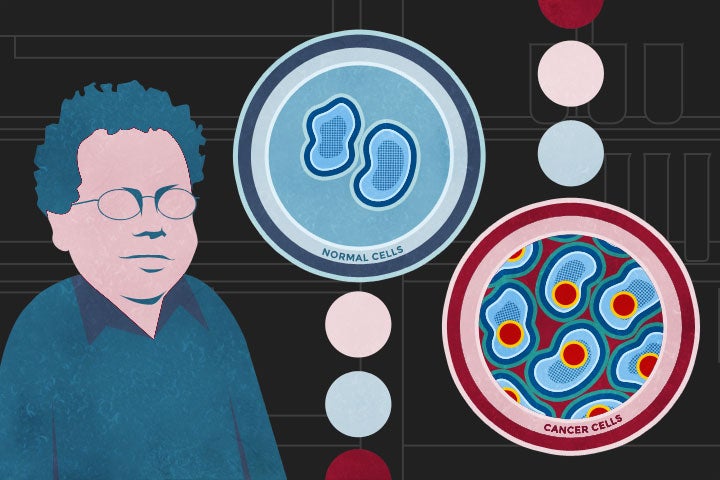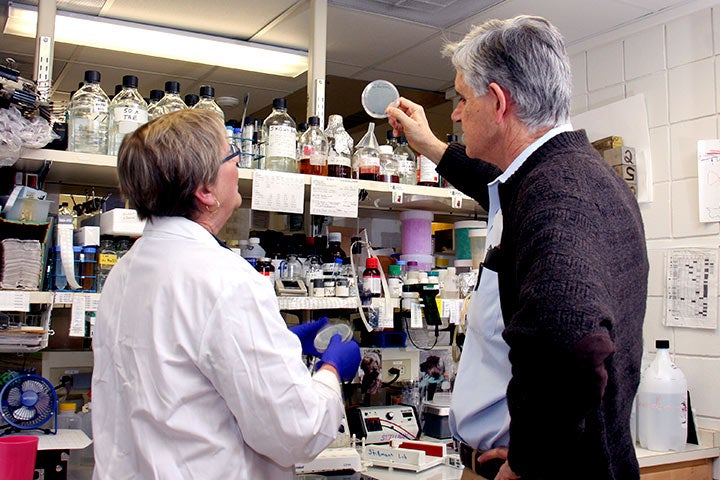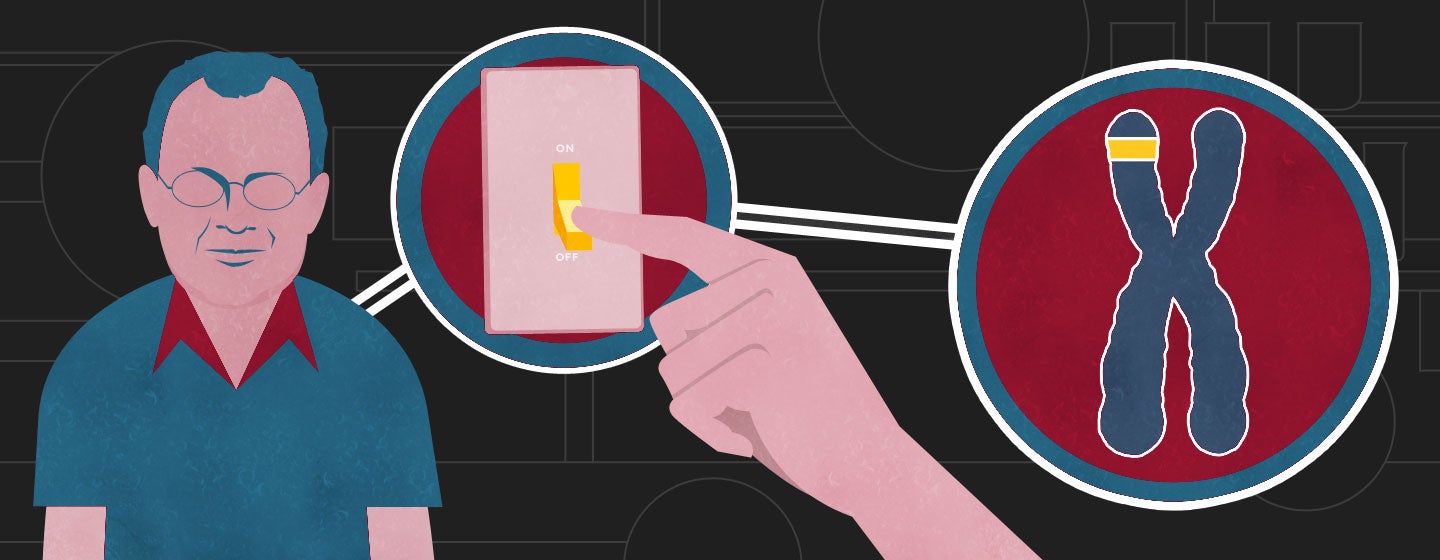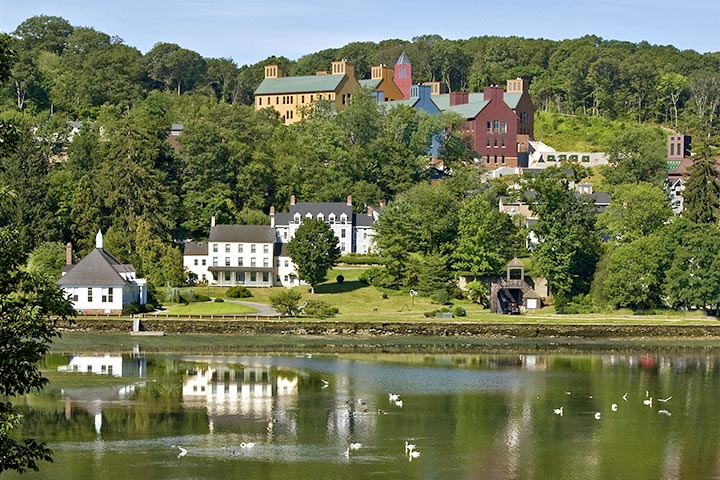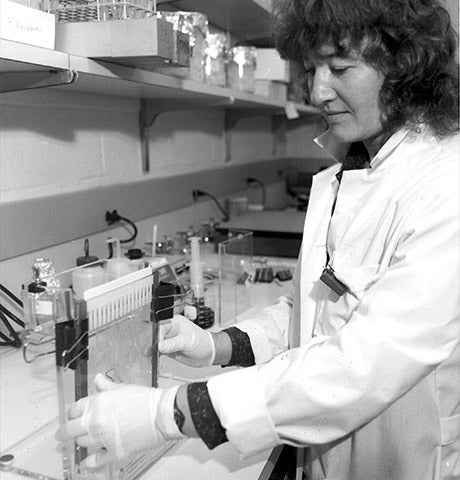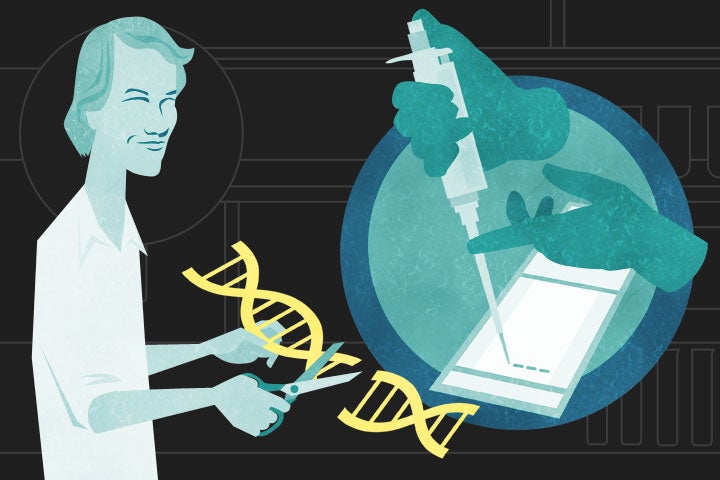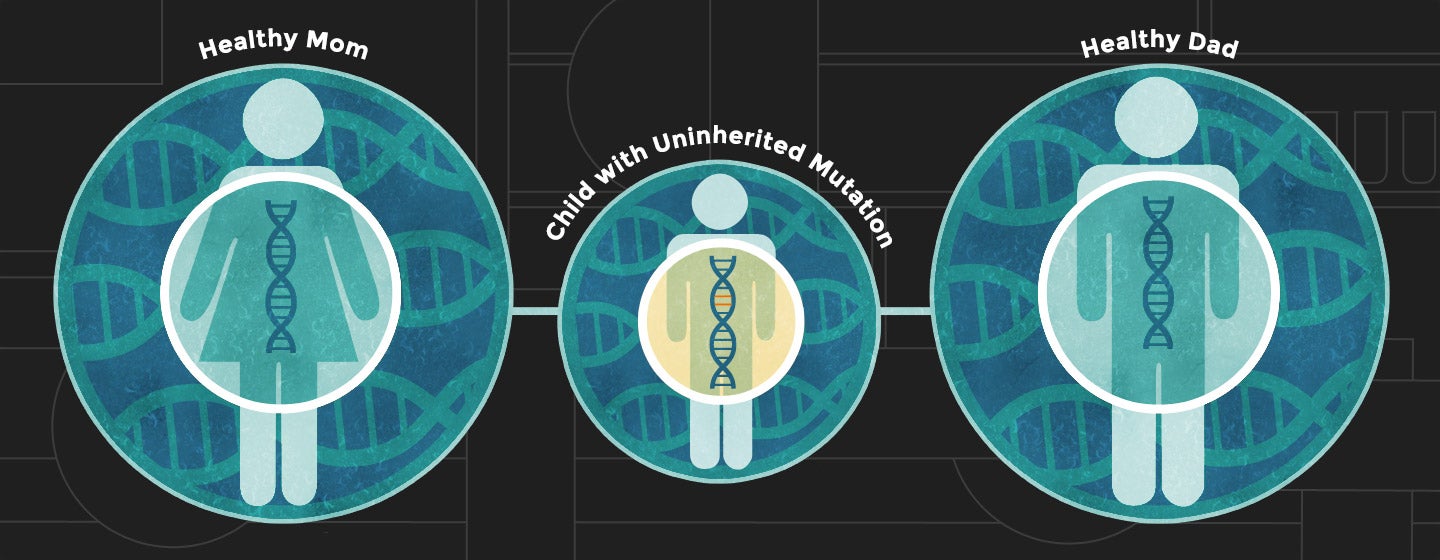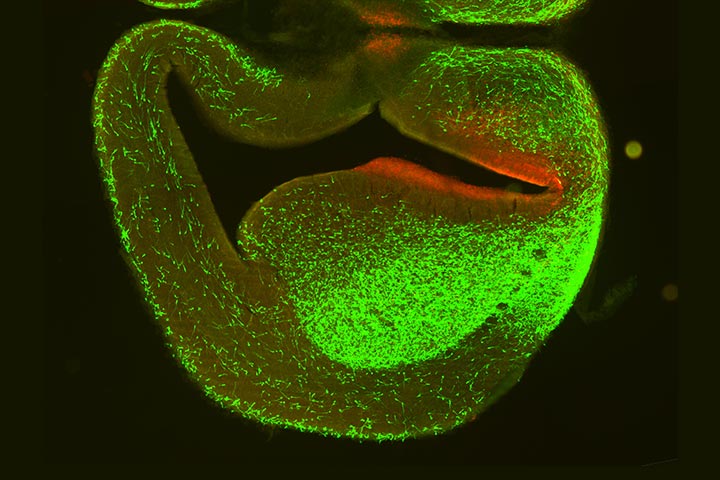125 years Discoveries that make a difference
1890—Now
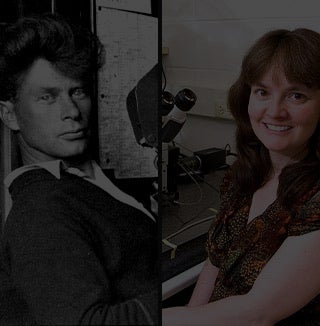


To celebrate our 125th anniversary, we'd like to share some of our proudest moments with you.
Timeline introductionWhen did America become a world leader in science?
American science takes flight 1890—1940
Class of 1890: the first biology teachers educated at Cold Spring Harbor.
By 1890, America had reached its continental limit. What would Americans conquer next? At Cold Spring Harbor, NY and other locations, American labs were beginning to test the theories of Charles Darwin and Gregor Mendel. Probing life’s secrets, American biologists were pioneers on an endless scientific frontier. This is the story of how Cold Spring Harbor biologists helped put America at the forefront of scientific discovery.
In 1893, a laboratory rose on the shores of Cold Spring Harbor to replace warehouses once used by the whaling industry. By 1904, Jones Lab and an adjacent field station funded by philanthropist Andrew Carnegie placed Cold Spring Harbor on biology's map.
In the early 1920s, Cold Spring Harbor researchers took first steps in understanding cancer. By figuring out how to breed animals susceptible to the disease, they made a technological breakthrough. In 1928, E. Carleton MacDowell produced mice that always developed leukemia. With this predictable outcome, scientists could study how cancer developed.
At Cold Spring Harbor, the discovery of hybrid vigor provided a foundation for modern agriculture. Later, the genetics of fruit flies and mice provided the first chromosome-level glimpses of the relation between inheritance and disease. This research helped place America among the most advanced scientific nations.
How did American science help win World War II?
Precious knowledge for new weapons and medicines 1940—1945
Wartime discoveries made at Cold Spring Harbor saved the lives of injured soldiers.
WWII exploded into consciousness like a bolt of lightning. Hitler's troops stormed across Europe and North Africa. Japan roused America with its attack on Pearl Harbor. As Allied armies gathered strength, scientists on the homefront drew upon research in physics, chemistry, and biology to contribute to a war for the survival of the free world.
American scientists were asked by President Roosevelt's director of R&D to convert research into tools to win the war. Milislav Demerec was Cold Spring Harbor's newly appointed Director. A world leader in chromosome genetics, he now focused on mass‑producing life‑saving antibiotics.
Four Cold Spring Harbor buildings were used for war research. In James Lab, a technique was invented to measure the earth's magnetic field and used in anti-submarine warfare. In Nichols Lab, a nozzle was developed that could distribute fine mists at low pressure, a basis for administering penicillin in aerosol form.
Penicillin experiments were part of a portfolio of US wartime achievements that included nuclear fission and radar. These persuaded Congress to establish continuous government support for basic research in independent institutions like Cold Spring Harbor. Science helped win the war, and has led America forward ever since.
What was the “the secret of life” discovered by biologists in the 1950s?
Understanding DNA and how it carries genetic information 1940—1970
25‐year‐old James Watson first presents double helix to a public audience, at 1953 Cold Spring Harbor Symposium.
By 1900 scientists knew chromosomes carried traits like those Mendel tracked in pea plants. By 1910 the word “gene” denoted the factors in which such traits were thought to reside. But no one yet knew what genes were made of or how they worked. No one had figured out the secret of life.
In 1941, Max Delbrück and Salvador Luria began spending summers at Cold Spring Harbor. They pursued the mystery of genes by studying a simple process in which tiny viruses, called phages, infected bacteria. Joined by Alfred Hershey in 1943, they formed the Phage Group, which would revolutionize our view of life. The three founders won Nobel Prizes in 1969.
In 1952, future Nobelist and CSHL Director Hershey performed an experiment with Martha Chase that was simple and historic. Using a household blender to separate a solution containing phage-infected bacteria, they settled a big question. The material in the virus that “transformed” the bacteria — into factories for viral reproduction — was DNA, not protein.
In 1953 Watson, working with Francis Crick in Cambridge, England, made one of biology's greatest discoveries. They deduced the twisting-ladder shape of the DNA molecule — a double helix. This shape explained how the molecule of heredity works. The ladder carries life's instructions encoded in the sequence of its chemical “rungs.” They shared a Nobel Prize in 1962.
Scientists meeting yearly at Cold Spring Harbor incubated the science of molecular genetics. The field's signature discovery was made at Cambridge in 1953, when Watson and Crick discovered DNA's double-helix structure.
What have we learned in the War on Cancer?
Cancer's complex genetic and cellular underpinnings 1970—Now
Nobel laureate Richard Roberts led the search for enzymes to cut DNA, an enabler of the biotech revolution.
The 1971 National Cancer Act was the opening salvo in the War on Cancer. An infusion of federal funds to support the National Cancer Institute and academic research reflected a lesson of World War II R&D. Great things could be accomplished with a sense of urgency and a readiness to invest. Biology was poised to take great strides.
In 1972, CSHL received its first “cancer-war” grant from the government. James Watson, recently appointed the Lab's Director, worked to make Cold Spring Harbor a top cancer research institute. CSHL brought together many superb young minds, pioneers in analyzing and manipulating DNA and studying the life cycle of cells.
In the 1980s, CSHL scientists revealed how mutant proteins encoded by oncogenes caused human cells to grow out of control. Earl Ruley showed that some cancers start only after multiple genes become mutated. Ed Harlow showed how cancer progresses not only via activation of oncogenes but also by deactivation of genes called tumor suppressors.
In the 2000s, Scott Lowe showed how specific mutations correlated with patients' resistance to treatment. Cancer relapse became a research focus. Several CSHL teams created a way to quickly produce mice with the same mutations and treatment responses as patients. New treatment ideas could now be tested before translation back to people.
Today we know most of the mutant genes that drive tumors. We know how these mutations cause cells to grow out of control. With this knowledge we can make some common cancers chronic, not killer, diseases. The next focus: stopping metastasis.
Has the Human Genome Project brought us closer to cures for diseases?
Targeted medicines, more food, cleaner energy 1986—Now
Modern genome sequencing machines can process 3000 genomes a month. The first full human genome took a decade to assemble.
What goes wrong in genes and proteins to cause cancer or schizophrenia? In the 1980s, scientists thought about “spelling out” all 3 billion “letters” of the human genome. This code that defines our species would be a basis for seeing what goes awry in disease.
At a CSHL meeting in 1986, scientists first debated a genome sequencing initiative. In 1987 James Watson argued the case before Congress, calling for a $3 billion, 15-year Human Genome Project. He was its first director, setting in motion an historic worldwide effort.
In the 1970s, Richard Roberts assembled a set of enzymes that act like scissors, each cutting DNA at a particular spot. This made DNA engineering practical, helping to launch the biotechnology industry.
A method developed at CSHL to precisely compare genetic sequences of different individuals enabled identification of new genes in cancer and mental illness. In 2004, it led to discovery of copy number variations, extra or missing sections of DNA. Everyone has them. In an unlucky few, they cause devastating illnesses.
Following Roberts' Nobel-winning work explaining why genes can generate multiple, differing proteins, Adrian Krainer discovered how gene messages are spliced incorrectly in disease. A drug he helped invent in 2011 to correct a splicing error in spinal muscular atrophy (SMA) is in clinical testing.
The Human Genome Project was just a beginning. Applications of genomics to problems of human health, food, and energy are multiplying. Cold Spring Harbor Laboratory is fulfilling the promise of molecular biology.
